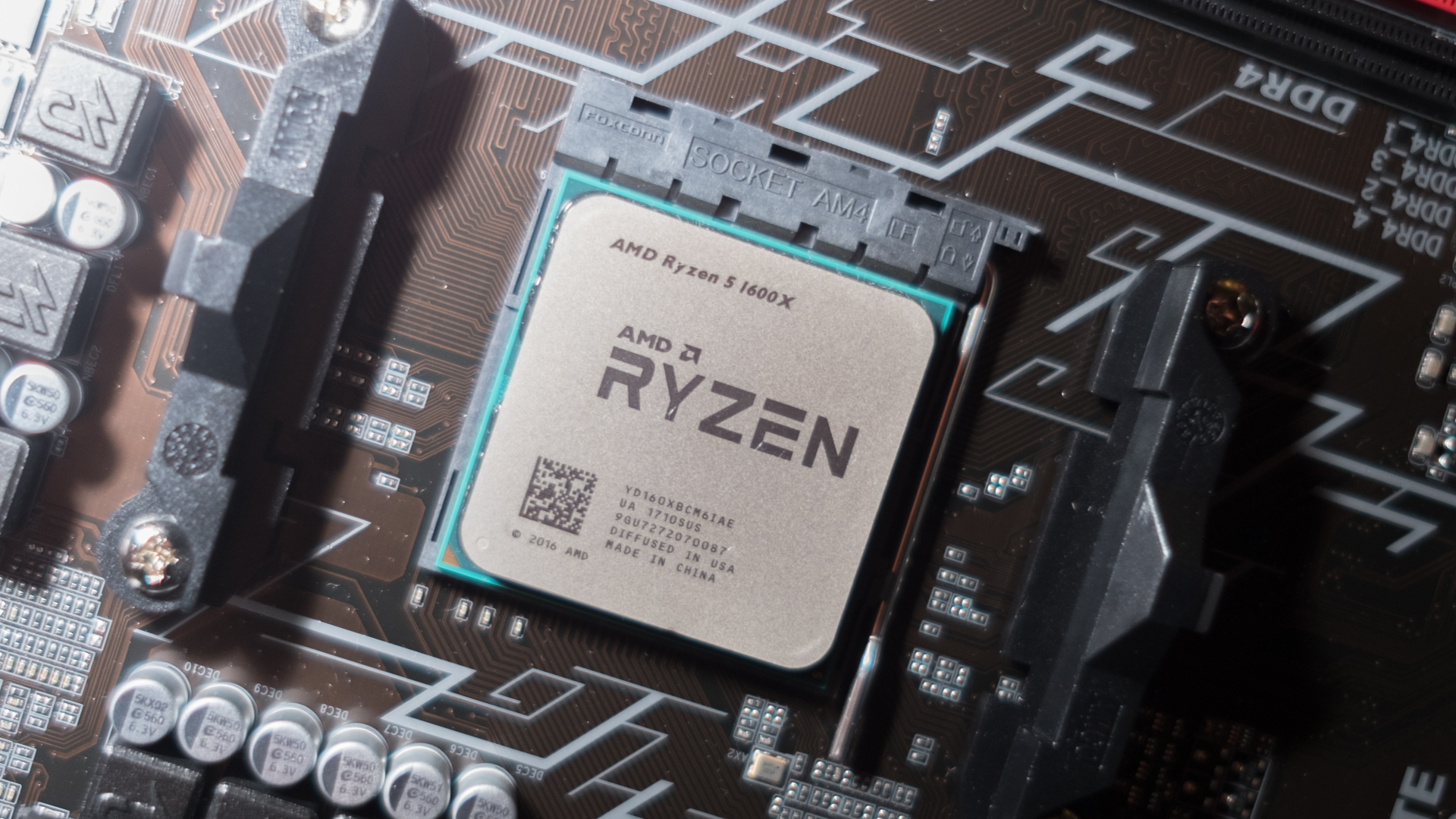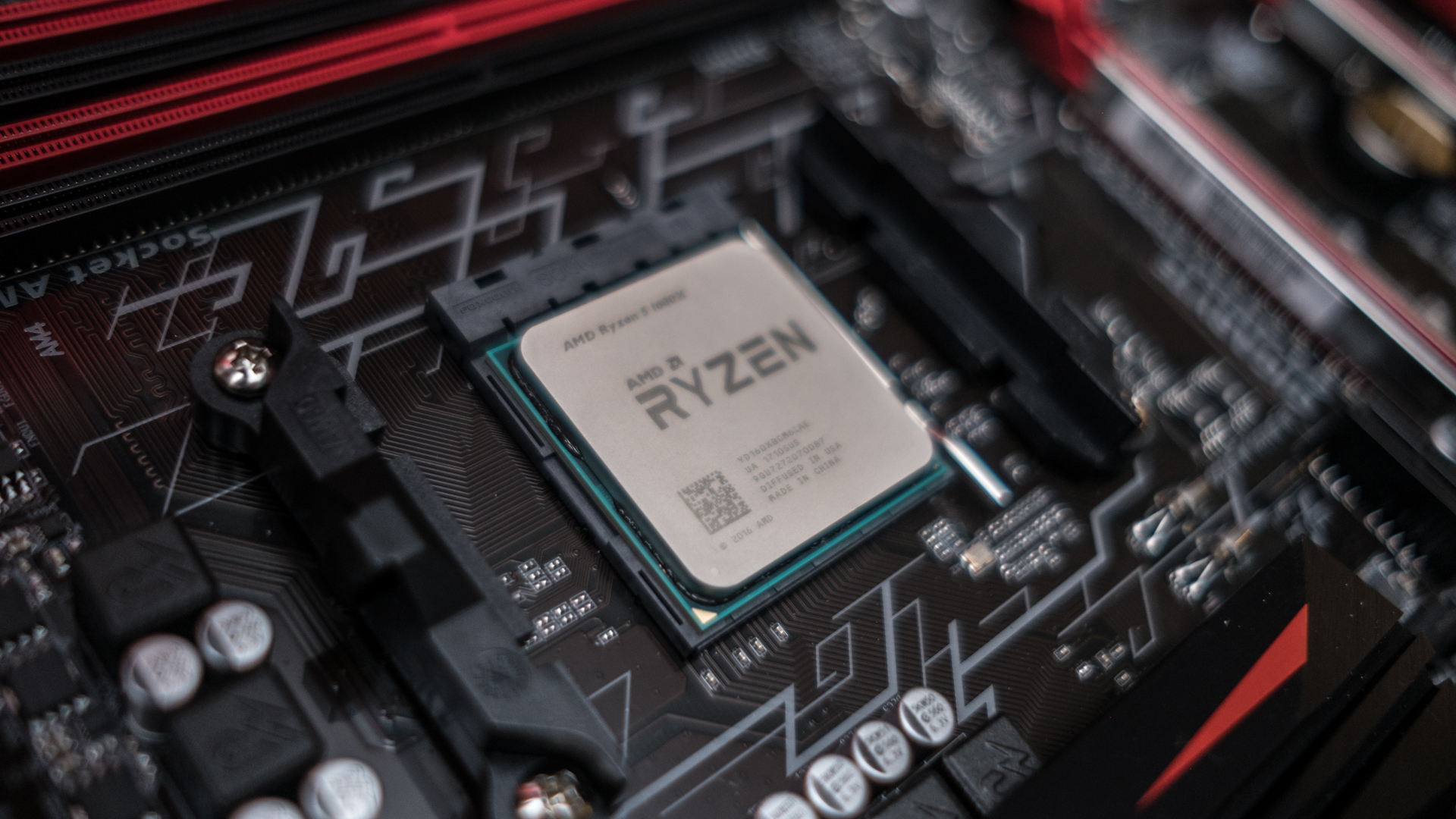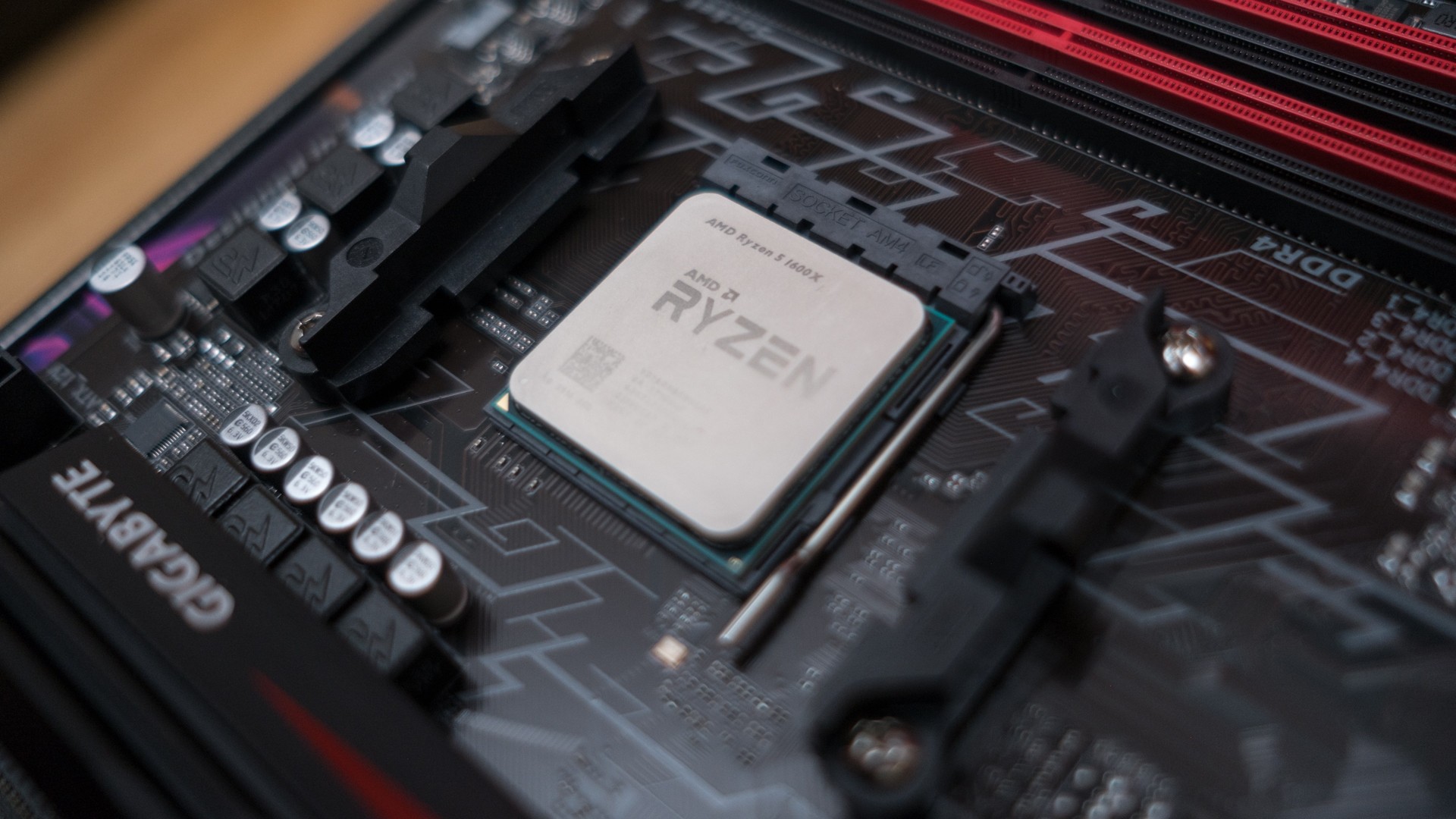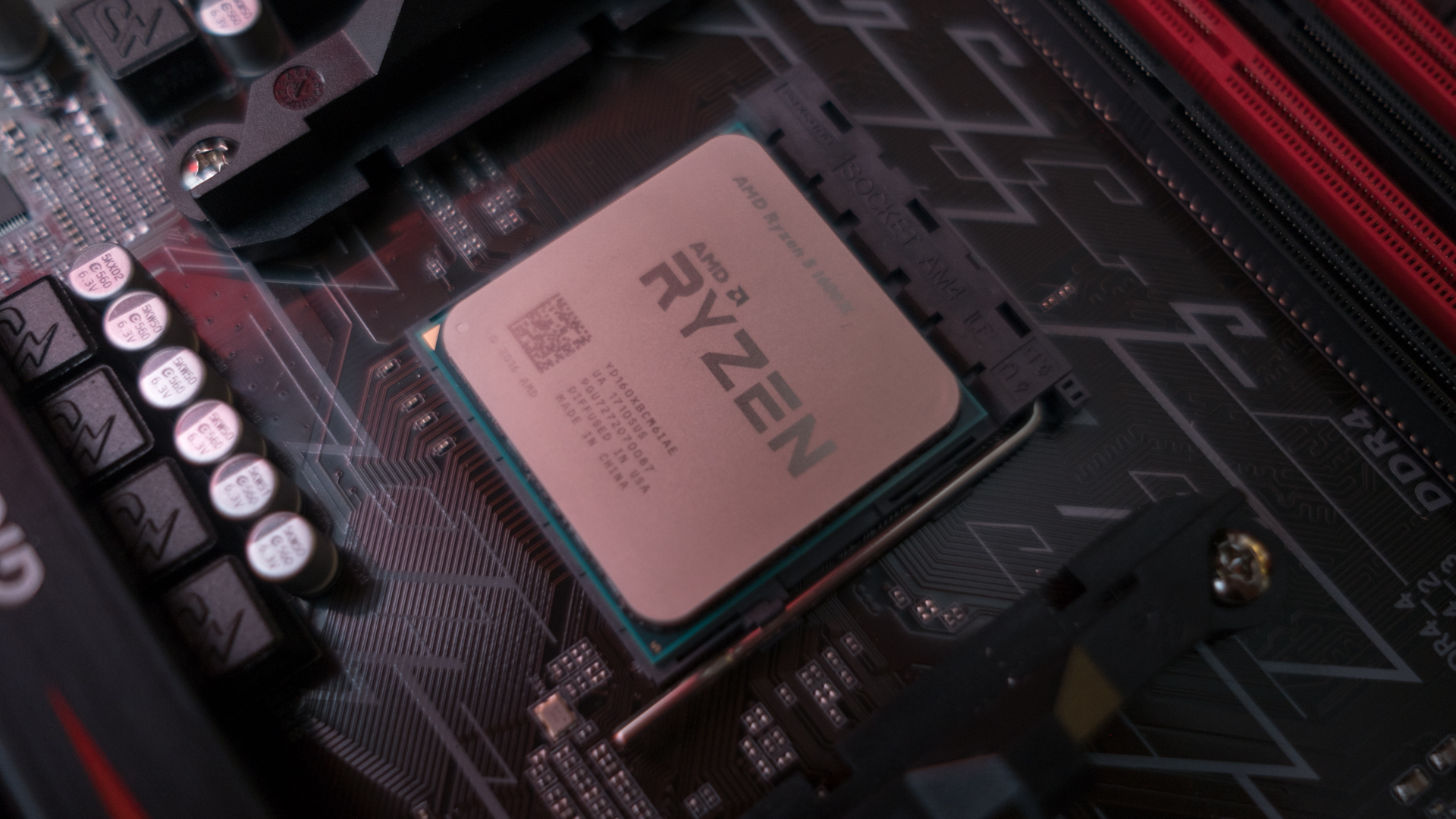TechRadar Verdict
The AMD Ryzen 5 1600X isn't a just an affordable chip for gamers and media creators, it an incredible package that puts multi-core computing on the mainstream map.
Pros
- +
Awesome multi-core performance
- +
Strong gaming performance
- +
Cool running chip
Cons
- -
Tricky overclocking
Why you can trust TechRadar
AMD has made a huge splash with Ryzen 7 by bringing a full range of affordable octo-core chips to the market, but we’ve been far more interested in how Ryzen 5 will elevate the mainstream computing scene. Not only are the parts even more inexpensive, you’ll at the very least get four cores and unlocked overclocking potential – two things Intel typically gates behind higher-priced parts with suffixes like “HQ” and “K.”
Of course, Ryzen 5 not only meets Intel’s specs, but shoots well above them.
Like its bigger Ryzen 7 brother, these mid-range processors are all about packing more cores and hyperthreading. The 1600X sits at the top of the Ryzen 5 family, featuring six-cores and eight-threads with a base clock speed of 3.6GHz that punches up to a maximum of 4.0GHz. It’s an impressive processor that not only beats Intel’s Core i5 and i7 processors, but also manages to turn its nose up at the Broadwell-E series.

Cores: 6
Threads: 12
Base clock: 3.6GHz
Boost clock: 4.0GHz
L3 cache: 16MB
TDP: 95W
Pricing and availability
For a hexa-core processor, AMD’s $249 (£249, AU$359) flagship Rzyen 5 1600X processor seems downright cheap. On paper, the cost of those two extra cores is almost an afterthought when you stack it up against its direct competitor, the $239 (£219, AU$339) quad-core Intel Core i5-7600K.
That said, AMD still lags behind in frequency when the 7600K operates at 3.8GHz at any given moment and 4.2GHz when push comes to shove.
If extended overclocking and boost frequencies are trivial matters to you, AMD also offers the Ryzen 5 1600 at $219 (£219, AU$319). It’s still outfitted with 6-cores and 12-threads, but clocks in at a slower 3.2GHz and maxes out at only 3.6GHz.
By comparison, Intel’s current hexa-core processor is the Core i7-6800K, which runs for a significantly higher $419 (£395, AU$599) price tag. Going back a generation to Haswell-E doesn’t make six-core processors that much cheaper either, with the ageing Intel Core i7-5820K running for $319 (£260, AU$310).

Features and chipset
With Ryzen 5, AMD continues to innovate on its new architecture and 14nm process. Like Ryzen 7, AMD has engineered Ryzen 5 to operate on a AM4 chipset with all the modern amenities of computing. This includes support for DDR4 RAM, the fastest NVMe SSDs and Thunderbolt 3 ports.
Going a month back you may remember Ryzen 7 launching with high-end X370 motherboards featuring plenty of expandability with USB 3.1 Type-C and SATA Express ports. This time around Ryzen 5 has been introduced alongside B350 motherboards that are a bit lower-spec but still support a 10Gbps USB 3.1 port and two additional PCIe lanes for bleeding-edge SSDs.
However, there are also some noteworthy cuts, including no support for multiple graphics cards. You might still find the odd, premium B350 board that offers dual PCie 3.0 x 8 graphics card slots, but be aware that AMD has stated these will only support the company’s own CrossFire technology and not Nvidia SLI.
As the B350 boards aims to serve a more mainstream audience, you’ll also likely find fewer power phases and smaller heatsinks on some models. These could limit your ability to overclock the 1600X and other Ryzen 5 processors, so you would be better off getting a X370 board as we’ve used for this review.

GPU: Nvidia GTX 1080 Ti (11GB GDDR5X VRAM)
RAM: 16GB Vengence LPX DDR4 (2,666MHz)
Motherboard: Asus ROG Crosshair VI Hero
Power Supply: SilverStone SX700-LPT
Storage: 512GB Samsung 960 Pro M.2 SSD (NVMe PCIe 3.0 x4)
Cooling: AMD Ryzen Wraith Max RGB Cooler
Operating system: Windows 10
Performance
Ryzen hasn’t had the smoothest entrance into the computing world with lackluster gaming and some CPU temperatures high enough to raise concerns. But after a month of optimizations plus new drivers and BIOS updates, Ryzen 5 seems to have bypassed those same growing pains.
By contrast, the Ryzen 5 1600X has proven itself to be an issue-free processor. AMD’s flagship mid-range CPU scored an astonishingly high Cinebench R15 score of 1,232, nearly a two-times higher than the Intel Core i5-7600K. At the same time, it edges ahead of the Intel Core i7-6800K Broadwell-E processor, which racked up 1,153 points in the same test.
When it comes to encoding, the 1600X shows off again by holding a frame rate that was twice higher than anything the 7600K could pull off. Surprisingly, this dramatic difference in performance didn’t carry over to the FryBench rendering test.

Now the biggest question is can Ryzen 5’s top processor play games? The answer is yes and aw yiss.
The 1600X not only put in better numbers than the Intel Core i5-7600K, it also one-upped the Ryzen 7 1800X we reviewed a month ago. This is due in part to those optimizations we mentioned before. We've also since upgraded our graphics card from a Nvidia GTX 1080 to a Nvidia GTX 1080 Ti.
Regardless of those external factors, the 1600X proves it has the chops to be your main gaming system and a just as effective media creation platform – two things that are becoming intrinsically connected in this age of live-streaming, eSports and uploading gameplay videos.

Overclocking and heat
The Ryzen 5 1600X clocks up to 4.0Ghz just as it promises on the box, and with AMD’s Ryzen Master software you can take one of the cores all the way up to 4.1GHz. However, don’t expect to get much beyond that without seriously upgrading your cooling solution (read: liquid-nitrogen) and manually tweaking voltages behind the operating system level.
The good news is the Ryzen 5 1600X stays at a temperate 50-degrees Celsius while on load using just AMD’s stock Wraith Max air-cooler. Things would likely be even frostier if we mounted a liquid-cooling system.

Final verdict
There’s a saying that two heads are better than one and, well, six-cores are better than four. The extra processing power of the Ryzen 5 1600X puts Intel’s processors to shame, including both its closest competitor and a much higher-spec Broadwell-E part.
If you’ve been looking for an affordable, powerhouse CPU that both works and parties hard, this is it.
That said, to squeeze out all the potential of this surprisingly potent mid-range chip, you’ll want (and need) to splurge on an enthusiast-grade X370 motherboard.
While the octo-core and high-price of the AMD Ryzen 1800X seemed like overkill in certain respects, the AMD Ryzen 5 1600X feels like a no brainer for everyone from enthusiasts to artists and regular users who look for an extra bit of power. It’s an affordable and powerful chip for everything the modern gamer and creative needs, with extra headroom to grow.
Zak Storey also contributed to this review
Kevin Lee was a former computing reporter at TechRadar. Kevin is now the SEO Updates Editor at IGN based in New York. He handles all of the best of tech buying guides while also dipping his hand in the entertainment and games evergreen content. Kevin has over eight years of experience in the tech and games publications with previous bylines at Polygon, PC World, and more. Outside of work, Kevin is major movie buff of cult and bad films. He also regularly plays flight & space sim and racing games. IRL he's a fan of archery, axe throwing, and board games.

